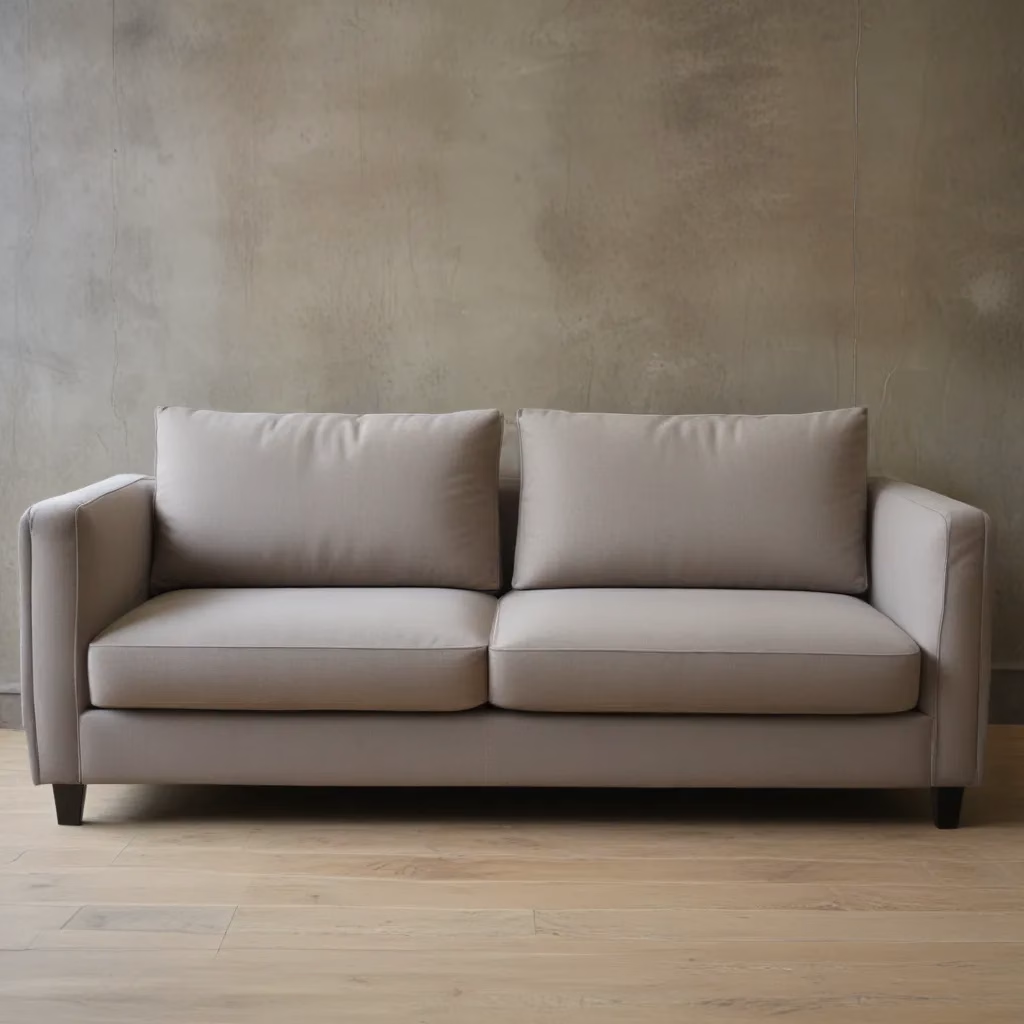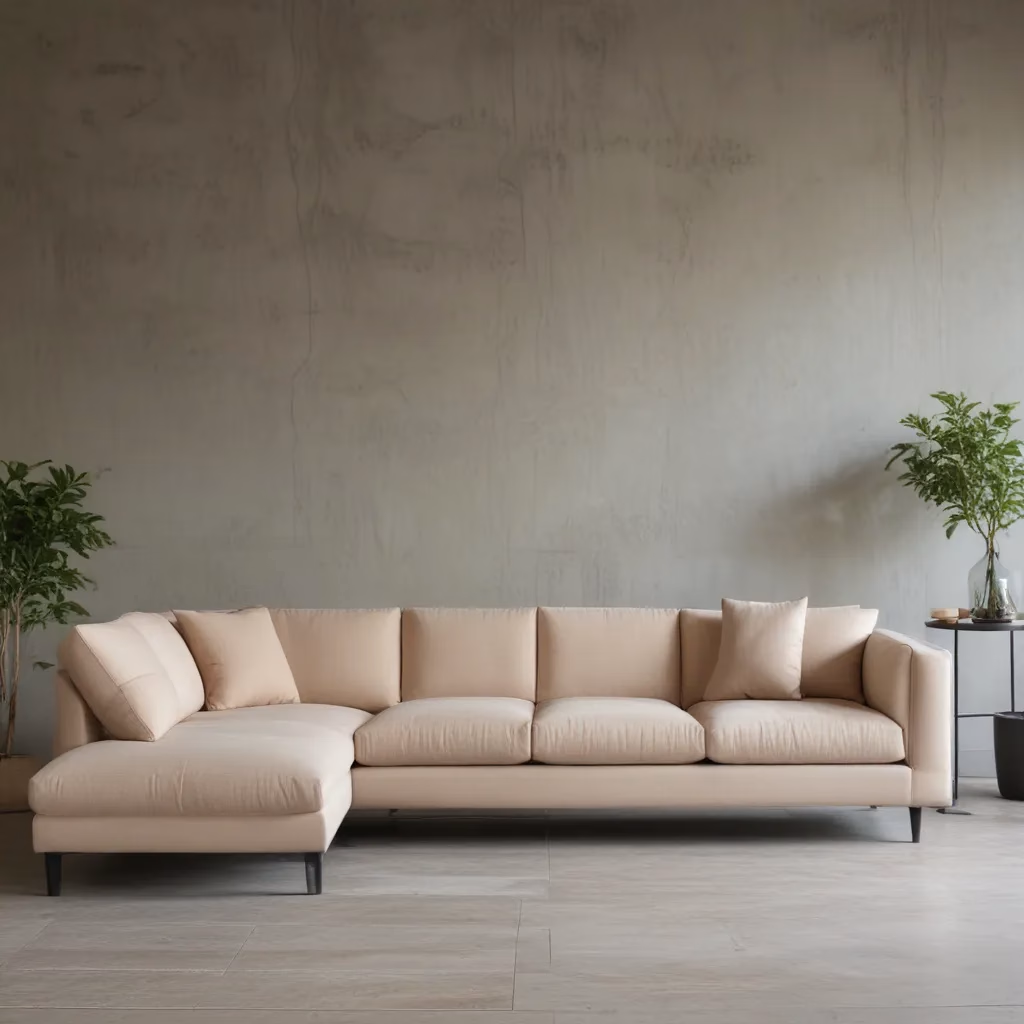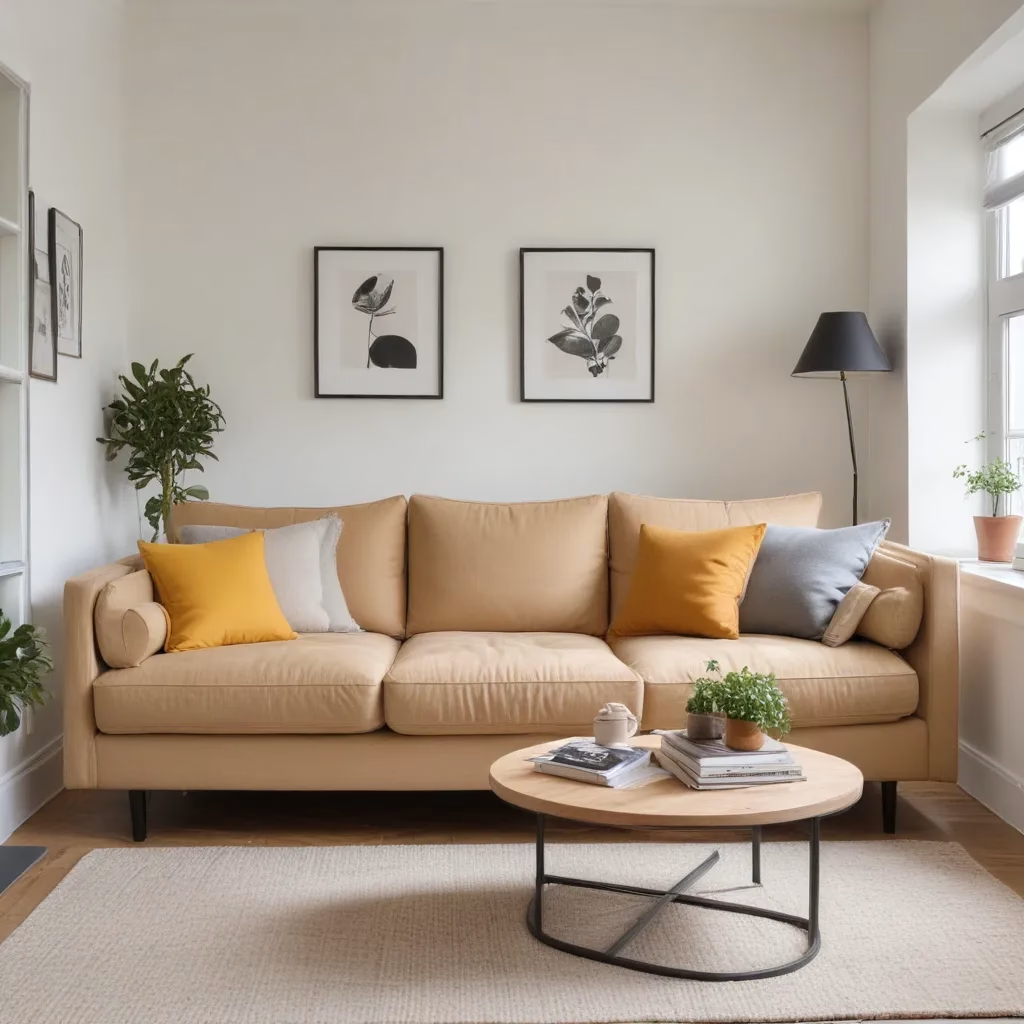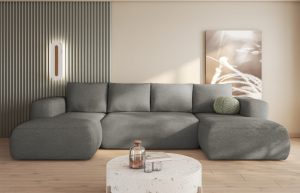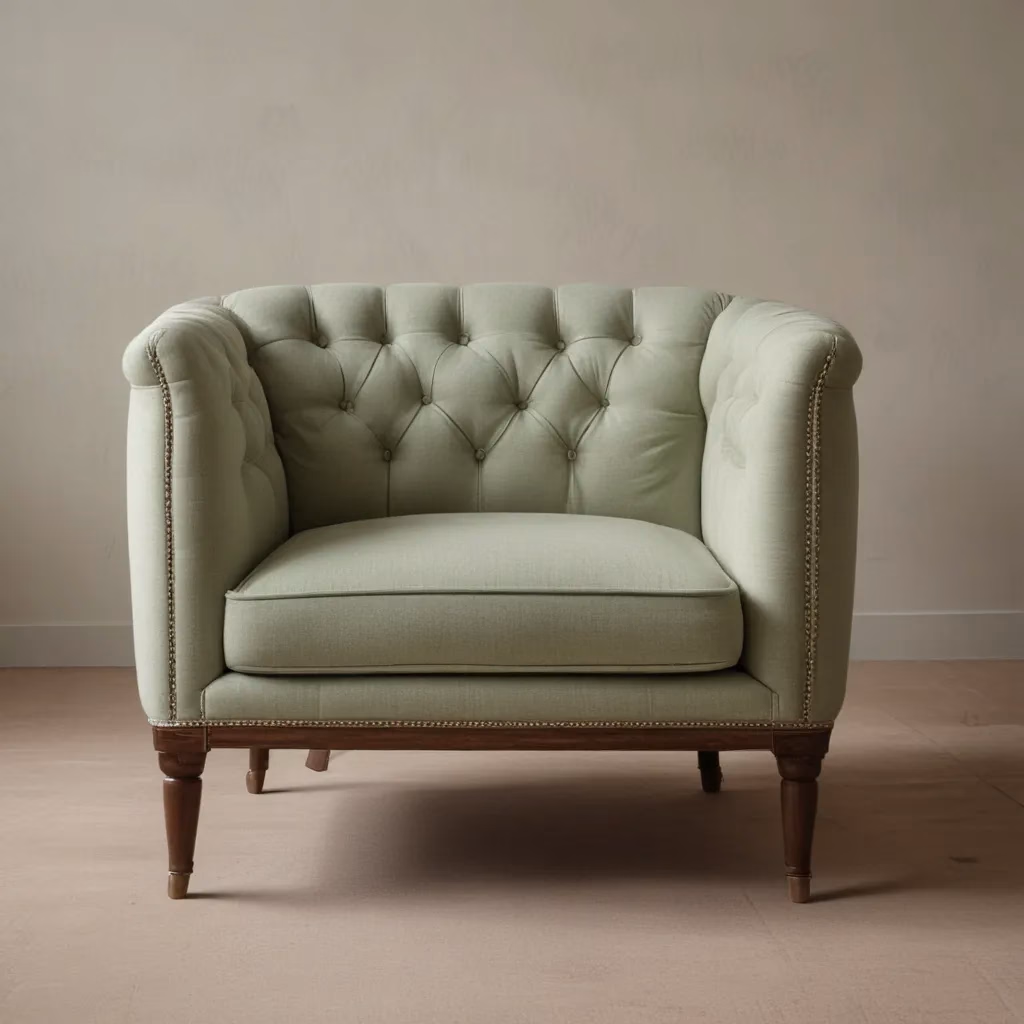
As an experienced furniture consultant and interior design writer, I’ve seen firsthand the transformative power of well-maintained upholstery. Sofas, chairs, and other plush furnishings are the cornerstone of any living room – not only defining the aesthetic but also setting the tone for comfort and relaxation. However, preserving the luxurious appeal and functionality of your upholstered pieces requires a bit of TLC.
Now, this might seem counterintuitive…
In this comprehensive guide, we’ll explore the essential tips and techniques for maintaining the beauty and longevity of your upholstery. From selecting the right fabrics to proper cleaning and conditioning methods, you’ll learn how to keep your furniture looking and feeling its best – no matter how much life it sees. So, let’s dive in and uncover the secrets to upholstery excellence.
Fabric and Upholstery Selection
The foundation of any well-designed living space starts with the materials you choose for your upholstered furniture. Whether you’re outfitting a brand-new sofa or revitalizing a cherished heirloom, understanding the unique properties of different upholstery fabrics is crucial.
Fabric Types and Properties
From the sumptuous sheen of velvet to the timeless elegance of leather, each upholstery fabric brings its own distinct personality and set of advantages. For high-traffic areas, consider durable options like microfiber or performance fabrics that can withstand daily wear and tear. If you’re aiming for a more luxurious look, brocade or damask may be the way to go. And don’t forget about the versatility of chenille and tweed for a cozy, textural appeal.
Ultimately, the fabric you choose will depend on your lifestyle, décor style, and personal preferences. By familiarizing yourself with the nuances of each material, you can make an informed decision that balances aesthetics and functionality.
Upholstery Durability Considerations
Longevity is key when it comes to upholstered furniture. After all, these pieces represent a significant investment, and you want them to maintain their beauty for years to come. When evaluating fabrics, pay close attention to factors like abrasion resistance, colorfastness, and ease of cleaning.
For high-traffic areas, look for tightly woven, solution-dyed fabrics that can withstand regular use without showing excessive wear. Stain-resistant and moisture-wicking properties are also desirable, especially if you have young children or pets in the home.
Selecting Patterns and Textures
The visual appeal of your upholstery plays a crucial role in setting the tone for your living room. While solid-colored fabrics offer a timeless sophistication, patterned and textured options can infuse your space with a unique personality.
Floral and paisley prints lend a touch of vintage charm, while geometric or abstract patterns can add a modern edge. Tactile fabrics like velvet, boucle, and chenille can create a cozy, inviting atmosphere, while smooth leathers and satins convey a sense of refined elegance.
When selecting patterns and textures, consider how they will complement your existing décor and create a cohesive, visually harmonious living room.
Living Room Layout Tips
Beyond the upholstery itself, the way you arrange your furniture can significantly impact the functionality and aesthetics of your living room. By understanding a few key principles, you can create a space that is both visually appealing and highly practical.
Furniture Arrangement Principles
Begin by identifying the focal point of your living room, whether it’s a fireplace, a stunning view, or a statement-making piece of art. Arrange your seating options – be it a sectional sofa, loveseat, or armchairs – to naturally draw the eye towards this focal point.
Consider the flow of traffic and double-check that there are clear pathways for people to move around the room. Avoid placing furniture in a way that blocks access or creates bottlenecks. Instead, try to create distinct conversation areas that encourage interaction and relaxation.
Balancing Function and Aesthetics
While creating a visually stunning living room is important, it’s equally crucial to prioritize comfort and practicality. double-check that that your seating options are not only aesthetically pleasing but also support good posture and offer ample cushioning.
Incorporate ottomans or coffee tables to provide surfaces for drinks, books, and other necessities, but be mindful of maintaining sufficient clearance for foot traffic. Strategically placed end tables or side tables can also add functionality while complementing your overall design.
Space-Saving Solutions
For those with limited square footage, clever space-saving strategies can make all the difference. Modular sectional sofas or loveseats with built-in storage can help maximize seating while keeping your living room uncluttered. Dual-purpose ottomans that convert into extra seating or serve as coffee tables are also invaluable in small spaces.
Consider swivel chairs or armchairs that can be easily repositioned to suit your needs, and don’t be afraid to experiment with wall-mounted or floating furniture to free up floor space.
Sofa Cleaning & Maintenance
Maintaining the pristine condition of your upholstered furniture is essential for preserving its beauty and longevity. Regular cleaning and conditioning can help your sofas, chairs, and other pieces resist the ravages of daily use and keep them looking their best.
Effective Spot Cleaning Techniques
No matter how careful we are, spills and stains are an inevitable part of life. When dealing with upholstery mishaps, it’s crucial to act quickly to prevent them from setting in and causing permanent damage.
Begin by blotting the affected area with a clean, absorbent cloth to soak up as much of the spill as possible. Avoid rubbing, as this can push the stain deeper into the fabric. Depending on the type of spill, you may be able to gently dab the area with a mild, pH-balanced upholstery cleaner or a solution of warm water and mild detergent.
For tougher stains, test any cleaning products in an inconspicuous area first to double-check that they won’t cause discoloration or damage. If the stain persists, consider consulting a professional upholstery cleaning service for more specialized treatment.
Regular Cleaning and Conditioning
Beyond addressing immediate spills and stains, it’s essential to develop a routine for deep-cleaning and conditioning your upholstered furniture. This not only helps maintain its appearance but also extends its lifespan by removing accumulated dirt, oils, and other contaminants.
Start by vacuuming your sofas and chairs regularly, using the appropriate attachments to reach into crevices and remove any loose debris. For a more thorough clean, consider using a gentle, upholstery-specific shampoo or steam cleaning your furniture every 6-12 months, depending on usage.
To keep your upholstery looking its best, finish with a light conditioning treatment. This can help replenish the fabric’s natural oils, restore softness, and protect against future wear and tear.
Preventative Measures
An ounce of prevention is worth a pound of cure, especially when it comes to upholstery care. Take proactive steps to shield your furniture from the elements and minimize exposure to potential damage.
Position your sofas and chairs away from direct sunlight, which can cause fading and premature wear. Use throw blankets or slipcovers to protect high-traffic areas, and consider investing in UV-blocking window treatments to safeguard your upholstery.
Regular rotation or rearrangement of your furniture can also help double-check that even exposure to light and use, preventing uneven wear patterns. Additionally, using furniture coasters or felt pads on the legs can prevent scratches and indentations on delicate flooring.
Styling for Comfort & Aesthetics
While maintaining the structural integrity of your upholstered furniture is essential, don’t forget the importance of creating a visually stunning and inviting living room. By thoughtfully layering textiles, colors, and accents, you can transform your space into a true haven of relaxation and style.
Layering Textiles and Accents
Soft, cozy textiles are the key to creating a warm, welcoming ambiance in your living room. Start with a plush area rug to anchor the space, then build upon it with throw pillows, blankets, and curtains that complement your upholstery.
Mix and match different patterns, textures, and materials to add depth and visual interest. For example, pairing a velvet sofa with linen or chenille accent pillows can create a sumptuous, layered look.
Incorporating Colour and Contrast
The use of color can significantly impact the overall mood and energy of your living room. While neutral palettes offer a timeless, sophisticated appeal, don’t be afraid to introduce pops of vibrant hues or soothing pastels to suit your personal style.
Consider how the colors in your upholstery, walls, and décor accents work together to create a cohesive, harmonious look. Contrasting elements, such as a jewel-toned velvet sofa set against white or grey walls, can add a striking, modern edge.
Balancing Form and Function
When styling your living room, it’s important to strike a delicate balance between form and function. While aesthetics are crucial, your furniture and décor should also prioritize comfort and practicality.
double-check that that your seating options, such as oversized armchairs or deep, plush sectionals, offer ample cushioning and support for relaxation. Strategically placed ottomans and side tables can provide surfaces for drinks, books, and other necessities without compromising the room’s visual flow.
By thoughtfully integrating both form and function, you can create a living room that is not only visually stunning but also a true oasis of comfort and relaxation.
The Sofa as a Focal Point
As the centerpiece of any living room, the sofa plays a pivotal role in setting the tone for the entire space. Whether you’re starting fresh or refreshing an existing setup, choosing the right sofa is essential for achieving your desired aesthetic and functionality.
Choosing the Right Size and Shape
The size and shape of your sofa can significantly impact the overall feel of the room. Consider the dimensions of your living space and choose a sofa that fits comfortably without overwhelming the area. Sectional sofas offer versatility and can be customized to suit the layout, while loveseat or apartment-sized options are perfect for more compact quarters.
Complementing Existing Decor
When selecting a new sofa, take into account your existing décor and design aesthetic. Choose a style, fabric, and color that seamlessly integrates with your current furnishings, creating a cohesive and visually harmonious look.
If you’re opting for a statement-making sofa, make sure it complements the other elements in the room, such as the coffee table, curtains, and artwork. This will help double-check that that your new centerpiece sofa becomes the focal point, without overpowering the entire space.
Versatile Sofa Styles
From the timeless appeal of a Chesterfield to the modern elegance of a mid-century design, there’s a sofa style to suit every living room. Tufted and nailhead-trimmed sofas convey a sense of refined sophistication, while sleek, low-profile options lend a more contemporary feel.
If you’re looking to create a cozy, inviting atmosphere, consider a rolled-arm or overstuffed sofa. And for those who value versatility, modular or sectional options allow you to customize the layout to suit your needs.
Furniture Buying Considerations
Investing in high-quality upholstered furniture is a significant decision that requires careful consideration. By evaluating key factors, you can double-check that that your living room centerpieces not only look stunning but also withstand the test of time.
Evaluating Quality and Construction
When shopping for sofas, chairs, or other upholstered pieces, pay close attention to the construction and materials used. Look for sturdy, well-made frames, high-density foam or spring cushions, and durable, reinforced seams.
Reputable brands and retailers can provide valuable information about the quality of their furniture, including details on the manufacturing process and the types of materials used. Don’t be afraid to ask questions and test the furniture in-person to double-check that it meets your expectations.
Understanding Warranties and Returns
Upholstered furniture represents a significant investment, so it’s essential to understand the warranty and return policies associated with your purchase. Reputable retailers will often offer comprehensive warranties that cover both the structural integrity and the fabric for an extended period.
Be sure to review the fine print and ask about any limitations or exclusions. Additionally, familiarize yourself with the store’s return and exchange policies, just in case you need to make adjustments to your order.
Budgeting for Long-Term Investment
While the upfront cost of high-quality upholstered furniture may be higher, it’s important to consider the long-term value and durability of your investment. Well-made pieces that are properly cared for can last for decades, saving you from the need for frequent replacements.
When budgeting for your furniture purchase, factor in not only the initial cost but also the potential for resale value, maintenance expenses, and the overall lifespan of the piece. This holistic approach can help you make an informed decision that aligns with your lifestyle and financial goals.
Optimizing Living Room Flow
The layout and flow of your living room can significantly impact the overall functionality and mood of the space. By carefully considering factors like traffic patterns, zoning, and technology integration, you can create a living room that is both visually appealing and highly practical.
Traffic Patterns and Walkways
Begin by analyzing the natural flow of movement through your living room. Identify the primary pathways that people will use to enter, exit, and circulate throughout the space. Arrange your furniture in a way that preserves these walkways, ensuring that there are clear, unobstructed routes for easy navigation.
If you have a larger living room, consider creating distinct zones for different activities, such as conversation, reading, or media viewing. This can help improve traffic flow and prevent bottlenecks, while also enhancing the overall functionality of the space.
Zoning for Conversation and Relaxation
In addition to traffic flow, it’s essential to consider how your furniture arrangement supports various social and relaxation activities. Arrange seating options, such as sofas, armchairs, and ottomans, in a way that encourages natural conversation and interaction.
Experiment with different layouts, such as a U-shaped or facing configuration, to create an intimate, conversational setting. Incorporate side tables or coffee tables to provide surfaces for drinks, books, and other accoutrements that facilitate relaxation and socialization.
Integrating Technology Seamlessly
As our living spaces evolve to accommodate the latest technological advancements, it’s crucial to find ways to integrate these elements without disrupting the overall aesthetic and flow of the room.
Consider media consoles or TV stands that can discreetly house your entertainment system, keeping cords and cables out of sight. Wireless charging stations and hidden power outlets can also help maintain a clutter-free appearance.
When arranging your furniture, be mindful of sightlines and positioning to double-check that that your TV or other media devices are easily visible and accessible from the primary seating areas. With a bit of planning, you can create a living room that seamlessly blends comfort, style, and modern convenience.
Upholstery Care and Repair
Even with the best preventative measures and regular maintenance, your upholstered furniture may occasionally require more extensive care or even repairs. By understanding the proper techniques and when to seek professional assistance, you can double-check that your pieces continue to look and feel their best.
Identifying Fabric Care Requirements
Each type of upholstery fabric has unique cleaning and conditioning requirements. Before attempting any DIY maintenance, familiarize yourself with the manufacturer’s instructions or consult a professional upholstery care guide.
For example, velvet may require a specialized cleaning solution and gentle techniques to preserve its luxurious, plush texture, while leather may need regular conditioning to maintain its suppleness and sheen.
DIY Fixes and Upholstery Techniques
Minor issues, such as loose cushions, minor tears, or sagging seat cushions, can often be addressed with some basic DIY skills. Reattach loose cushions, repair small rips or holes using upholstery thread and needles, and fluff or rotate cushions to maintain their shape.
For more complex repairs or if you’re unsure of the appropriate techniques, it’s best to consult a professional upholstery specialist. They have the expertise and specialized tools to handle intricate tasks like re-padding, re-webbing, or complete reupholstery projects.
Working with Professional Services
When your upholstered furniture requires extensive cleaning, restoration, or major
Tip: Rotate cushions regularly to maintain even wear

